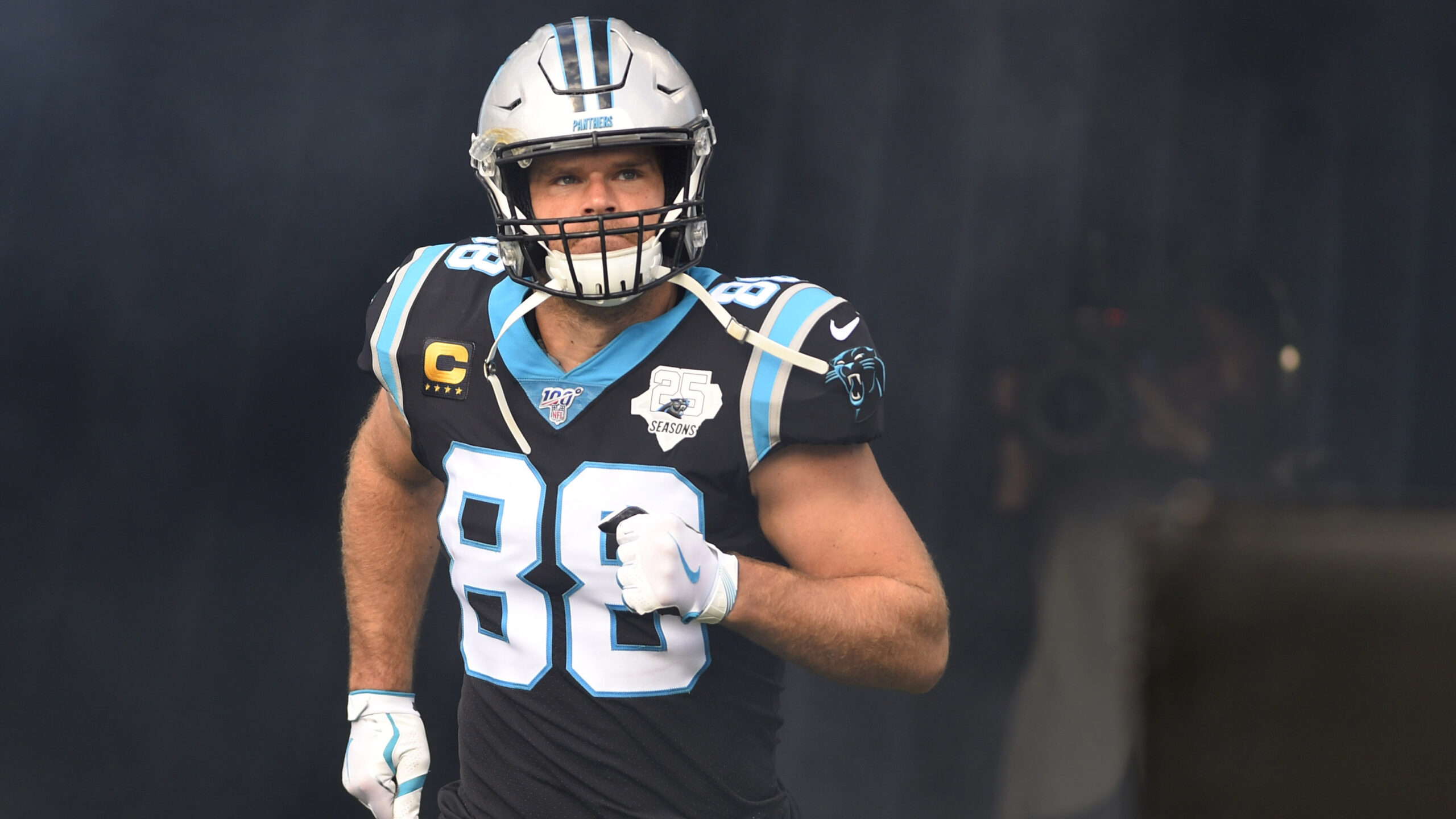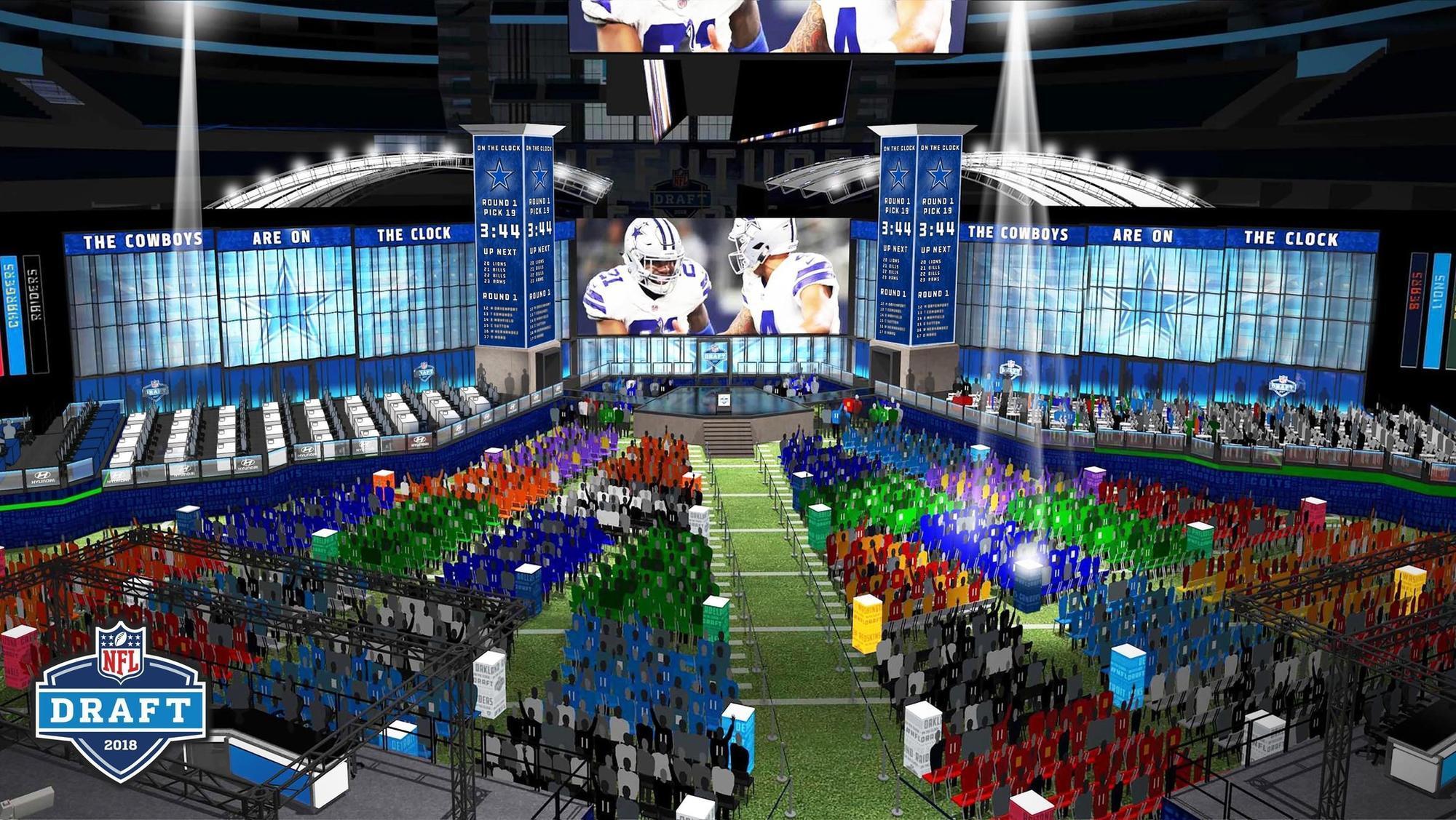
Before you start reading this article, please take a look at the headshots below. And before you ask, no, these are not the five guys who responded to your Craigslist post about the extra Tim McGraw concert tickets you are trying to sell. These men are actually the projected tight ends for the Seattle Seahawks this season. While they all may look like the frat guys from Theta Alphi Phi, they offer a diverse and intriguing collection of skills that could give Seattle one of the strongest position groups in the entire league for the 2020 season.
In a big-picture sense, the tight end position in the NFL is one of the most fascinating across league history. You can track the evolution of the league through studying the position. They combine both size and athleticism to make themselves matchup nightmares for defenses. Every team wants one. The issue is, they are rare. The ability to both be strong enough to block like an extra lineman and skilled enough to operate as another receiver is a unique blend that few in the league can do at a high level. Seattle, fortunately, has a couple of candidates who could operate both of these roles, as well as guys who can operate as one or the other. We will explore the skill set of each tight end on the roster and project what role they could occupy going forward.
Tight ends on roster:
Greg Olson
Will Dissly
Luke Willson
Colby Parkinson
Jacob Hollister
Tyler Mabry
Dominick Wood-Anderson
To begin, we’ll dive into the most accomplished veteran Seattle has on roster. Greg Olson is one of the most accomplished tight ends in the history of the NFL. In his career with both the Bears and Panthers, he put up totals of 718 receptions, 8,444 yards and 59 touchdowns, with a large chunk of that production coming from a three-year stretch between 2014-2016 where he put up three 1,000-plus yard seasons in a row. Those 718 receptions he racked up are the 5th-most all-time among tight ends. His accomplishments make him a candidate to one day be enshrined in the Hall of Fame. Only problem is, to put up Hall of Fame stats means playing a lot of years in the league. He’ll be entering his 14th NFL season in 2020 and all that wear and tear has taken a toll both on his production and health. While his counting numbers from last season look good at a glance (52 rec, 597 yds, 2 TD), Pro Football Focus ranked him as the 23rd-best tight end in the league. He also has only played a total of 30 out of a possible 48 games over the last three seasons, marking him as an injury risk. While he is a bit long in the tooth, his experience in the league means he could operate as a security blanket for Russell Wilson on passing downs and be a reliable set of hands in tough situations.
Olsen’s primary competition for the starting spot comes in the form of third-year pro Will Dissly. To be frank, this shouldn’t be a competition at all, except for one particular issue. Dissly has played a total of 10 NFL games in his two-year NFL career. Multiple serious injuries have wiped him out for extended periods of time, including an achilles injury last year and a torn patellar tendon his rookie season. But, with that being said, what he has shown in his limited time on the field has been downright tantalizing. Over the six games he was healthy in 2019, he averaged a per-game stat line of 3.8 receptions, 43.7 receiving yards, 1 touchdown and looked like the ideal third weapon for Russell Wilson and the offense. In this small sample size, Pro Football Focus marked him as their 6th(!)-best tight end across the league. He caught long balls down the seam, trucked would-be tacklers on short dump-offs and most importantly (for a team that’s struggled to protect Russell Wilson) could block when asked. If (and that’s a huge IF) he returns from his achilles injury at full health, he should slot in as the Seahawks’ number one tight end. While no firm timetable is given on his status, that type of injury could take a year or more to recover. It’s fair to expect he’ll be put on the shelf at the beginning of the season. Let’s pray—for him and the Seahawks’ offense—that he stays healthy going forward.
Before we move on to discuss the rest of the depth chart, I’d like to take a moment to reflect on the situation that arose in 2019 regarding this position. Seattle began that offseason believing it had tight end locked up with Dissly as the starter, Nick Vannett as his backup and journeyman Ed Dickson behind them for depth. By week six, all of them were gone. Dissly hit injured reserve, Vannett was traded and Dickson was out for the year with his own injuries. This was how undrafted tight end Jacob Hollister became the Seattle starter, as well as the team’s third-leading receiver on the year.
Jacob Hollister wasn’t even on the Seattle roster at the start of training camp in 2019. Seattle traded a 7th-round draft choice to take a flier on him from the Patriots, making a bet that they could get more out of the young pro than New England did. And boy, did that chance pay off. In 11 games, Hollister hauled in 41 catches for 349 yards to go along with 3 touchdowns and established a nice rapport with Russell Wilson. He proved himself a quality NFL receiver, but for him to make that type of impact again (barring another unforeseen injury to Olsen or Dissly) he has to work on the other aspects of his game. For the coaching staff, blocking would be at the top of that list. Pro Football Focus marked Hollister as below average in run blocking and—even more concerning—a poor pass blocker giving him a score of 45.2 (out of 100) in that category. While the NFL is ever more turning into a pass-first league, the tight end’s ability to block is extremely important for when a team needs to protect against a blitzing defense. For Hollister to see consistent game time, he must be able to help protect Russell Wilson.
While blocking would be the coaches’ first concern in Hollister’s game, fans would certainly want to see him become stronger. His low yards-per-catch number of 8.5 is concerning and speaks to a lack of ability to make yards after contact. This is evidenced by his worst moment of the year, as in the dying seconds of Seattle’s last game of the season against the San Francisco 49ers, he was stopped inches short of the goal line by a San Francisco linebacker, costing the Seahawks both the game and the NFC West title. A bit more raw power may have made the difference for Seattle to enter the playoffs as a top seed rather than a wild card.
Next on the list is another familiar face and fan favorite. Luke Willson, in all of his Canadian glory, made his return to the Seahawks during 2019 amongst their rash of injuries. While he’s never been a key player on offense, he has become loved for both his unique personality and attitude on the field. Known for his long locks, quirky radio interviews and the invention of techno Thursdays, Willson is a welcome addition to the roster. On gameday, Luke will provide what he has always provided since his rookie season, quality depth. While he has never had more than 22 receptions in a season, he always seems to find a spot in the game to make his impact felt. Russell trusts him to be in the right place and doesn’t shy away from giving him chances in key moments. He is also a trusted blocker, both in the running and passing games. He is an ideal third or fourth tight end, which is exactly where he’ll be on the depth chart.
Whereas Willson has been around Seattle for a long time, Colby Parkinson is just arriving. A rookie fourth-round pick out of Stanford, one quality is very apparent in his game film—size. Unfortunately, he didn’t show much else during his college career. After hauling in 48 grabs for 589 yards in his final season at the Cardinal, he showed a propensity for using his size to regularly create separation from coverage and make some tough catches. One could easily envision watching a streaking Parkinson running down the seam and receiving a beautiful rainbow from Russell Wilson over the top of a defender. There are some issues that might prevent that from happening, though. While he has shown a proficiency at catching the ball, Parkinson hasn’t shown he can do much with it. Pro Football Focus recorded him as only creating an average of 3.9 yards-per-reception after the catch and only breaking 4 tackles during his college career. They also marked him as a substandard run blocker, ranking him 40th in that aspect and is a concern for a team that runs the ball as much as Seattle does. He also picked up a foot injury this offseason that will make him miss training camp and the preseason, meaning he won’t have any chance to iron out those flaws before opening day. While his size could give him a chance to be a factor on offense in the future, his injury and flaws probably means he won’t see much of the field this coming season.
The other two tight ends competing for playing time are Tyler Mabry and Dominick Wood-Anderson. Mabry is built like a typical player at the position, coming in at 6’4, 248 lbs. While his limited production at the University of Maryland (13 rec, 155 yards, 3 TDs) aren’t promising, he may have some unearthed potential that could benefit the Seahawks. Woods-Anderson is in the same boat, limited college production (38 career rec, 408 yards, 3 TDs) matched with a sturdy build (6’4, 257 lbs). While there are five established veterans ahead of them on roster, all outside of Parkinson have aged out of being practice squad-eligible players. Both of them could be fighting for a spot as a deep reserve.
Taking everything into account, the Seahawks have a collection of tight ends who bring everything a team would need to the table. There is a mix of youth and veterans, to go along with high-ceiling starters and reliable backups. The issue, as always, is health. If all are available on gameday, the Seahawks could do some truly creative things on the offensive end. A line-up featuring Will Dissly and Greg Olsen would bring two positive pass-catchers onto the field that could either take advantage of linebackers on pass plays or operate as large downfield blockers if the Seahawks opted to run the ball. If they were to also add a third tight end like Parkinson or Hollister to the mix—with both DK Metcalf and Chris Carson—Seattle would have insane size without taking too much away from the passing game. If Dissly or Olsen were to get hurt, then Seattle could be forced to mix and match skillsets like they did last season and have a negative impact on the Seahawks’ offensive output. The tight ends could wind up being one of the deepest, most talented groupings on the team, as well as bring Seattle’s offense to another level.
Opening Day Roster:
Starter: Greg Olsen
2nd String: Jacob Hollister
3rd String: Luke Wilson
Injured: Will Dissly, Colby Parkinson
Practice Squad: Dominick Woods-Anderson
Cut: Tyler Mabry




1 Trackback / Pingback
Comments are closed.